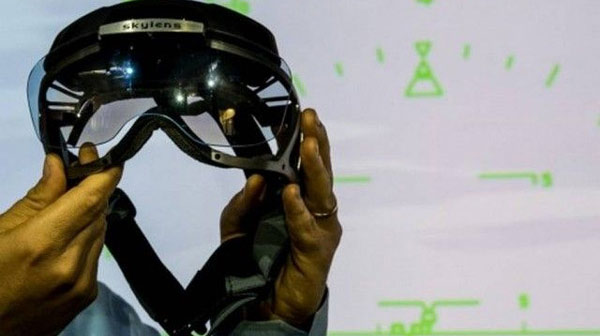Wearables are becoming more of a mainstream thing with the arrival of some products for the casual consumer like the iWatch, but some of you might not know that wearables are actually doing a lot more than entertainment and make us think of science-fiction. Indeed, in a sector like aviation, wearables are actually bringing in results that are very tangible. Of course, one would expect a field as technologically-advanced as aviation to be at the fine edge of what’s possible in terms of tech, and we’re getting a perfect example here. Where in aviation? Let’s take a look at where wearables are already affecting the aviation world and what will eventually be possible in the future.
To Build More Airplanes
Wearables start to affect aviation as soon as the aircraft is being built, as it assists in doing tasks that involve precision, concentration and careful measurements. In the video below, Bruno Le Moal from company Accenture talks about how wearables greatly helps mark seats placement in the cabin and that employees are seeing a boost of 6 times in terms of productivity for that task. Impressive. Wearables are already being talked as a way to help companies deliver more planes per year, as the demand for air travel looks to be increasing. Le Moal talks about an objective of around a thousand planes a year for the upcoming years, something wearables could help achieve. Wearables are able to facilitate tasks and reduce errors during the creation of planes and the execution of such tasks.

Wearables for Passengers
Then, once the aircraft is built, wearables could also affect the passengers hopping on board. Think about how your iWatch could become the ideal way to get notified that your flight has been delayed or has changed gate, and just how much more practical that would be. Payments could also be involved in the process with the iWatch taking on the concept of a wallet when it was unveiled not too long ago. What’s interesting about wearables is how they disturb the people around you that much less, so instead of pulling out your cellphone and making the world once again seem about impersonal conversations and checks with your device, getting your notification could be as simple as looking at the time on your wrist. The idea of wearables is dynamic and more human in a way… which is an aspect airlines are constantly looking to improve on. Wearables could become useful from the staff, the customer… and the pilot?
Wearables for the Staff
Then, wearables could also help in with providing returning customers a more personalized experience. In a plane, the staff previously had to remember everything and be quick all while working in a plane that’s shaking and turning the lights on and off… but with wearables remembering preferences and orders could become much easier, and less stressful… Customers in a plane can always be rude or unclear with their orders, and different languages and manners come into play, so having more information on hand could always be useful to the staff on board. Wearables don’t require pulling out a tablet to check the orders or any maneuvers that could end up in a spilled drink or else, so having the information right by the eye would have a lot of value.
This article hints at an app for Google Glass to read baggage and passenger information. What difference would that make? Probably a big one since everything can be tracked and less lost items and confusion could be the result. Decidingly, wearables seem to be relevant in helping airlines in areas where they received plenty of criticism in the past, lost baggage being another one. The tracking ability of wearables like glasses seems to be very attractive to that industry, and as passengers will start wearing some themselves, the interactions could be very interesting and reduce some of the frustrations we were all seeing before.
Overall, there seems to be little doubt that wearables will change the way we fly and even the way we build the aircrafts in the first place. Wearables can help employees execute tasks more quickly and reduce errors when putting the plane together, while the staff providing the service to the customers could remember more details and even use data previously stored by an airline to better serve the most loyal customers. Wearables are also about data, which can always be put to better used when stores and perhaps part of what we call the Internet of Things in that it stores preferences and transactions in more details so that trends are built and better service come out as a result. And finally, the wearables available to the mainstream public can become involved and become a quick way to get updates concerning flights… and maybe less flight attendants being late to the gate? Decidingly, wearables seem to be a win-win pick when it comes to the world of aviation.


